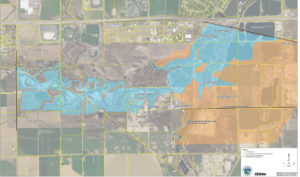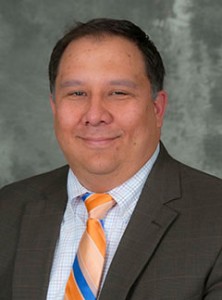Longmont, Colorado
 Longmont, Co. lies at the foot of the Rocky Mountains. The area is strikingly flat in comparison to what lies just 30 minutes away in the National Park that celebrates the mountain chain. That drastic drop in elevation leads to major runoff as waters flow east off of the mountains and in 2013, Longmont suffered catastrophic flooding, especially along the St. Vrain Creek.
Longmont, Co. lies at the foot of the Rocky Mountains. The area is strikingly flat in comparison to what lies just 30 minutes away in the National Park that celebrates the mountain chain. That drastic drop in elevation leads to major runoff as waters flow east off of the mountains and in 2013, Longmont suffered catastrophic flooding, especially along the St. Vrain Creek.
The city was lucky to escape any loss of life, but the damage to property and infrastructure was severe and resulted in more than $25 million in repairs, says Public Information Specialist, Jennifer Loper.
The city just recently finished those repairs and is now making progress toward restoration, sharing information on the projects through a specialized website, videos and events, such as the November 2016 Bike and Learn ride with the mayor.
The seven-mile, round-trip trek attracted more than 50 cyclists who heard from city engineers and project planners about the ongoing restoration of the St. Vrain Greenway trail, development of an 80-acre open space nature area, widening of the creek flood plain and reconstruction of wiped out infrastructure. Mayor, Dennis Coombs, joined the group at the last stop. (see the video)
“[Coombs] gets from one place to another on his bike,” said Rigo Leal, Longmont’s public information officer. “He’s really the inspiration for a bike and learn event.”
Building Citizen Trust
These events, monthly “coffee with council” and the city manager, a broad communications campaign during the disaster and ongoing information sharing build trust in the community of 92,000 and have helped it get through the flood and move on, said Leal. The citizens approved $20 million in bonds for the flood restoration and have approved a 3/4 cent street tax every 5 years since 1986. Amid the flood restoration the street tax was renewed for 10 years until 2026.
“I think this shows the trust between the city and the populace,” Leal added.
Major flood recovery work, including repair and rebuilding of damaged streets, parks, water resources, irrigation ditches, drainage systems, power lines and public buildings began immediately after the flooding and was completed in September 2016. This included the repair and widening of Sunset Street Bridge, which was washed out by flood waters but now hosts designated bike and walking lanes.
A Bigger Project
Along with the repairs, the city realized the need to prepare for future flooding by restoring and revitalizing the creek channel and launched the Resilient St. Vrain project that is expected to cost between $120-$140 million in combined federal, state and local funds, said Loper. Work could take up to ten years to complete and is being done in stages. The city hosts a video about the project on its website and created print collateral to explain the project to citizens.
“The City decided do more than just repair the creek corridor after the 2013 flood,” Longmont City Manager Harold Dominguez said. “It became an opportunity to restore the greenway in a way that ultimately improves this incredible amenity for the Longmont community.”
Through the restoration work, the city plans to move more than 800 acres and more than 525 structures out of the floodplain and will restore 8 miles of St. Vrain Greenway, the “crown jewel” of the area’s trail system. Design work on Resilient St. Vrain began in 2014. Construction work in the first section of the project, the Sandstone Reach, began in December 2016, and work on the second section, known as City Reach 1, will begin in early 2017. Planning and work also has begun on the Dickens Farm Nature Area within the 80 acres of open space. It will include recreational access to the creek, which was not easily accessible in the past. The plan also includes a creek path for tubers and recreational kayakers with several man-made drops.
The Resilient St. Vrain project has received a “Finding of No Significant Impact” designation from FEMA. In the Sandstone Reach, engineers are using the natural path of the creek that was re-established during the flooding, working around nesting bald eagles and re-using tree root wads for softer diversion tactics.
City Manager Harold Dominguez, along with Public Works & Natural Resources General Manager Dale Rademacher, were instrumental in quickly and efficiently working with FEMA to start the flood recovery process and giving timely status updates to the community and the City Council.
Meet the Manager

